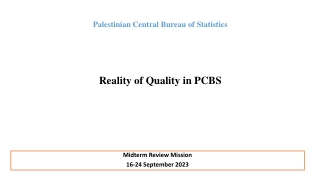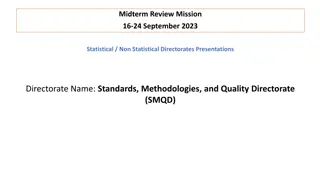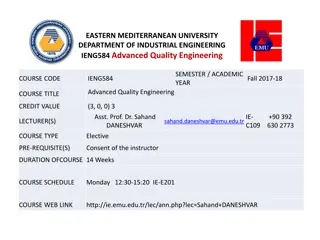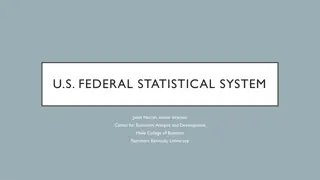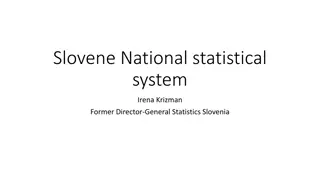
Statistical Quality Control Concepts
Explore the basic concepts of quality control including factors like materials, manpower, machines, and management. Learn how quality control ensures products meet specifications, leading to better consumer satisfaction and efficient production processes.
Download Presentation

Please find below an Image/Link to download the presentation.
The content on the website is provided AS IS for your information and personal use only. It may not be sold, licensed, or shared on other websites without obtaining consent from the author. If you encounter any issues during the download, it is possible that the publisher has removed the file from their server.
You are allowed to download the files provided on this website for personal or commercial use, subject to the condition that they are used lawfully. All files are the property of their respective owners.
The content on the website is provided AS IS for your information and personal use only. It may not be sold, licensed, or shared on other websites without obtaining consent from the author.
E N D
Presentation Transcript
PADMAVANI ARTS AND SCIENCE COLLEGE FOR WOMEN, SALEM-11 DEPARTMENT OF STATISTICS MISS. K. KOWSALYA SUBJECT: STATISTICAL QUALITY CONTROL SYLLABUS
UNIT-I BASIC CONCEPTS OF QUALITY
Quality control means a level (or) standard of the product which in industrial depends on four m s (i.e) Materials, manpower, machines and management. Uses of quality control Quality control involves testing of units and determining if they are with in the specifications for the final product. The purpose of the testing is to determine any needs for corrective actions in the manufacturing process. Good quality control helps companies meet consumer demands for better products.
Factors (or) Characteristics of quality control Quality control is broadly classified as, Quality of materials Quality of manpower Quality of machines Quality of design Quality of Conformance
Quality of materials Materials of good quality result in smooth processing there by reducing the waste and increasing the output. It will also give better finish to the end products. Quality of manpower: Trained and qualified persons will increase the quality of production through the application skills and reduces the production cost and waste.
QUALITY OF MACHINES Better quality equipment will results in efficient work due to lack or scarcity of breakdowns and thus reduce the cost of defectives. Quality of management A good management is imperative for increase in efficiency, harmony in relations, and growth of business and markets.
Quality of Design All goods and services are produced under various levels. These variations in quality are intentional and they are referred to as quality of design. All automobiles provides some transportation, but they differ in size, appearance and performance. These differences are the results of intentional design differences.
Quality of conformance Quality of conformance refers to how well the product conforms to the specification and tolerances of required design. It is influenced by a number of factors such as choice of manufacturing processes, skill of work force, sophisticated technology, etc.. (i) Physical, length, weight, voltage, viscosity. (ii) Sensory, taste, appearance, colours. (iii) Time orientation, reliability, maintainability, etc..
DEFINE SQC Statistical quality control(SQC) is the term used to describe the set of statistical tools used by quality professionals. Statistical quality control refers to the monitoring and maintaining of the quality of products and services. Basics of S.Q.C S.Q.C Allowable variation Chance Causes(or) Allowable variation
Chance variation Assignable variation Consist of many individual causes. Consist of just a few individual causes. Any one chance causes results in only a small amount of variation. Any one assignable cause can results in a large amount of variation. Chance variation cannot economically be eliminated from a process. The presence of assignable variation can be detected, and action to eliminate the causes is usually economically justified. Some typical assignable causes of variation are: Negligence of operators. Defective raw material. Faulty equipment. Improper handling of machines. Some typical chance causes of variation are: Slight vibration of a machine. Lack of human perfection in reading instruments and setting controls. Voltage fluctuations and variation in temperatures.


